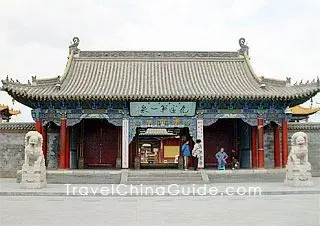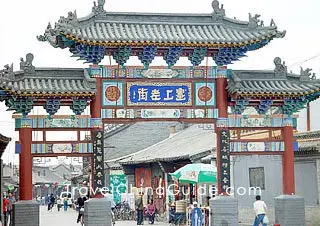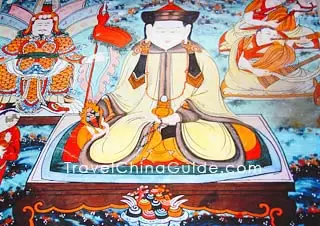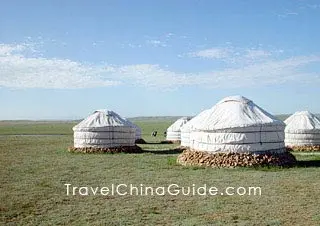 |
| Dazhao Temple |
Historical records on Hohhot region were found more than 2,000 year ago. The ancient nomad tribe called Rongdi was found to have lived in the region early in the Spring and Autumn Period. In 306BC, during the Warring States Period (476BC-221BC), the Zhao State built the Great Wall at the foot of Yinshan Mountain and established Yunzhong Shire, the site of which is located at the present Tuoketuo County, southwest of Hohhot. It is thus believes that the ancient city at Tuoketuo had to be the beginning of Hohhot.
After Hohhot was recaptured from the Huns, many military fortresses were built during the Western Han Dynasty (206BC-24AD). Clay city of that time can still be found in Tabutuo Village, east of Hohhot. From then until the Northern (386-581) and Southern (420-589) Dynasties, the city was known as Shengle. It was the early capital of the Tuoba Tribe of Xianbei ethnic group which rose in North China during that period.
During the Sui (581-618) and Tang (618-907) dynasties, it was included within the scope of Turkis, named Baidao Chuan and Fengzhou. It later came under the Liao Dynasty (916-1125) which was established by the Khitans in the early years of the 10th Century.
 |
| Old Street, Hohhot |
During the early Ming Dynasty (1368-1644), the Tumed (or Tumet) Tribe from Mongolia moved in and built many houses with the intention of ending their nomadic life. They conducted peaceful policy in communicating with the Ming and brought about some thirty years of peace. However, the city named Guihua built by the Tumed was burnt down by the Qing (1644-1911) army. During the reign of Emperor Kangxi, the Qing Court defeated the Mongolian Junger Tribe and added an outer city to the former Guihua city. A new city of Suiyuan was built in the northeast of the old city.
In 1928, Suiyuan was promoted to be a province and renamed Hohhot City and later came under the jurisdiction of the Inner Mongolia Autonomous Region in 1954.

Story about Hohhot
Although the region has a history of more than 2,000 years, the establishment of Hohhot city can be only traced back some 400 years ago. The story is highly related to San Niang Zi, a popular personality known by every Mongolian people.
She was born on the Ordos Plateau some 400 years ago during the Ming Dynasty. She was good at singing and dancing, perfect in horse-racing and archery and particularly beautiful and smart. Altan Khan, the leader of the Tumed Tribe and descendant of Genghis Khan, unified this area with remarkable relent. He asked for mutual trades with the Ming but was not permitted for a long time, even if he tried to quest for peace through besiege Beijing, the capital of Ming, for three days. Consequently, a sate of war began and continued for a long period. Then in 1507, San Niang Zi married Altan Khan and became the best assistant to him. She successfully helped Tumed in achieving peace with the Ming and brought about years of wars to an end.
 | | San Niang Zi | |  | | Gegentala Grassland | |
As Altan Khan became older and paid more attention to Lamaism, San Niang Zi took charge of the Tumed people. She handled the annual mutual trade and sent tributes to the Ming emperor. There was no town and city in the grassland for the nomadic Mongolians to settle down. Altan Khan only built castles in the Tumed region during the early days. Hence, San Niang Zi suggested to Altan to build a bigger city in Hohhot during the peaceful time. She even designed and implemented plans personally. The city wall was united with greenish grey bricks, making Hohhot known also as Qing Cheng (Green City). She made great contributions to the establishment of the first city in the Mongolian grassland.
- Last updated on Apr. 12, 2021 -



